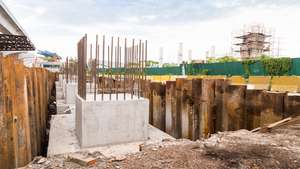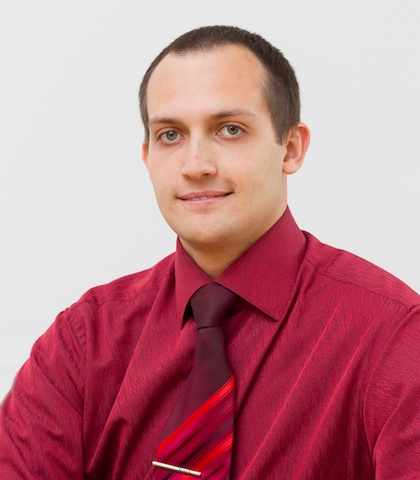
Determination of support reactions of rod constructions obtained by morphogenesis.
 Volodymyr Skochko 1*
Volodymyr Skochko 1*
1Architectural Structures Department of Kyiv National University of Construction and Architecture.
Received: 06/01/2018, Accepted: 10/03/2018, Correction dated: 10/07/2018.
DOI: https://doi.org/10.32557/useful-2-3-2018-0005
HDL: http://hdl.handle.net/20.500.12334/13
Google Scholar mendeley
*Corresponding author: e-mail: vladimir.and.friends@gmail.com, address: Povitroflotsky Avenue, 31, Kyiv, 03680 Ukraine
Under a creative commons license. Volume 2, Issue 3, 2018, pages: 29-42.
Author Keywords: rod structures, geometrical morphogenesis, discrete geometry
Abstract
This article shows a method for determining the support reactions of rod architectural structures, the position of free nodes of which was previously obtained by discrete geometrical morphogenesis (shaping). At the same time, the order and principle of defining and forming all the necessary discrete data on the topological features of the model, its boundary conditions, external loads and the distribution of internal forces are considered. The algorithm is based on logical operations and matrix transformations.
1. Introduction
Most of the rod structures of coatings have a difficult configuration and are statically indeterminate due to the large number of supports and the specifics of their fixing. Therefore, the calculation of support reactions in order to determine the potential loads from these structures can become a challenge and require the use of modern numerical methods of complex modelling. If all internal forces in the rods (connections) that are attached to the supporting nods are known, then the determination of the values of the support reactions themselves is reduced to the operation of adding the vector components of the internal forces in these rods. Thus, the search of support reactions again indicates the need to calculate the components of the stress-strain state of the entire structure. For the use of numerical methods and the corresponding software, it is necessary to specify all the geometric, physical and mechanical structure parameters, which, as a rule, requires considerable effort and time. However, if it is a question of pre-design works or sketch designing, the time spent by designers on the evaluation of non-final solutions may not be appropriate. In this case, methods of geometrical morphogenesis can be useful. One of these methods is the static geometric method of discrete geometry [1], which allows realizing morphogenesis of the rod structure with pre-defined topological features and expected pattern of distribution of the density of internal forces in all rods. This method is applicable for momentless constructions, the rods of which work only on compression or tension. However, there is no unified methodology for the shaping of all necessary discrete data, relating to topological features, boundary conditions, external loads and the distribution of internal forces of the computational model. At the same time, the development of a systematic approach to the preparation of all these data is a very urgent task, since on the basis of the results of solving it, the tasks of shaping and determining support reactions can also be solved.
References
[1] S. Kovalev, "The formation of discrete surface models of spatial architectural structures". Dissertation of the Dr.Sc. Tech. Moscow, MAI, 348 p., 1986.
[2] V. Skochko, L. Skochko, "The Equation of State and Condition Parameters of the Mesh Structure Relationships". Grounds and Foundations. Vol. 34. Kyiv: KNUCA, pp. 47-57., 2013.
[3] V. Skochko, "Morphogenesis and Correction of Planar Rod Constructions with a Small Amount of Free Nodes". Polish Academy of Sciences. Lublin-Rzeszow. Motrol. Vol. 17 (8), pp. 35-42., 2015.
[4] P. Kulikov, V. Ploskiy, V. Skochko, "The Principles of Discrete Modeling of Rod Constructions of Architectural Objects". Polish Academy of Sciences. Lublin-Rzeszow. Motrol. Vol. 16 (8), pp. 3-10., 2014.
[5] R. Motro, "Tensegrity: structural systems for the future". Kogan Page Science, UK and USA, 238 p., 2013.
[6] K. Snelson, "Continuous tension, discontinuous compression structures". U.S. Patent No 3,169,611,16, Feb.1965.
[7] D. G. Emmerich, "Reseaux", in Space Structures: A study of methods and developments in three-dimensional construction". Proceedings of the International Conference on Space Structures, Guildford 1966, edited by R.M. Davies, Blackwell Scientific Publications, pp.1059-1072., 1967.
[8] A. Franklin Graybill, "Introduction to matrices with applications in statistics". Wrels Worth Publishing Company, Inc., Belmont, California, 1969.
[9] P. Marti, "Theory of Structures: Fundamentals, Framed Structures, Plates and Shells". John Wiley \& Sons, Inc., Ernst \& Sohn GmbH \& Co. KG., XVI. 679 p., 2013.
[10] I. Rabinovich, "Fundamentals of Structural Mechanics of Rod Systems". – M.: Gostroizdat, 1960.
Please cite as: V. Skochko, “Determination of support reactions of rod constructions obtained by morphogenesis.” USEFUL online journal, vol. 2, no. 3, pp. 29–42, Oct. 2018. DOI: https://doi.org/10.32557/useful-2-3-2018-0005









Comments